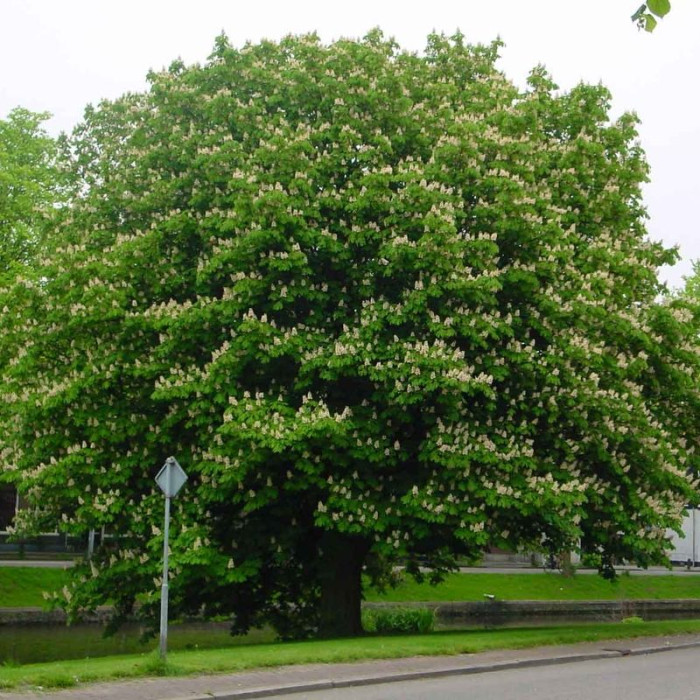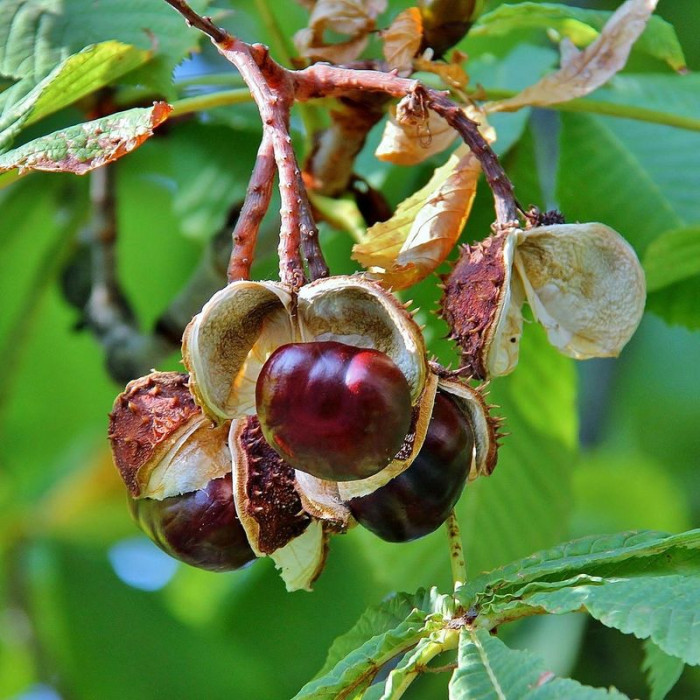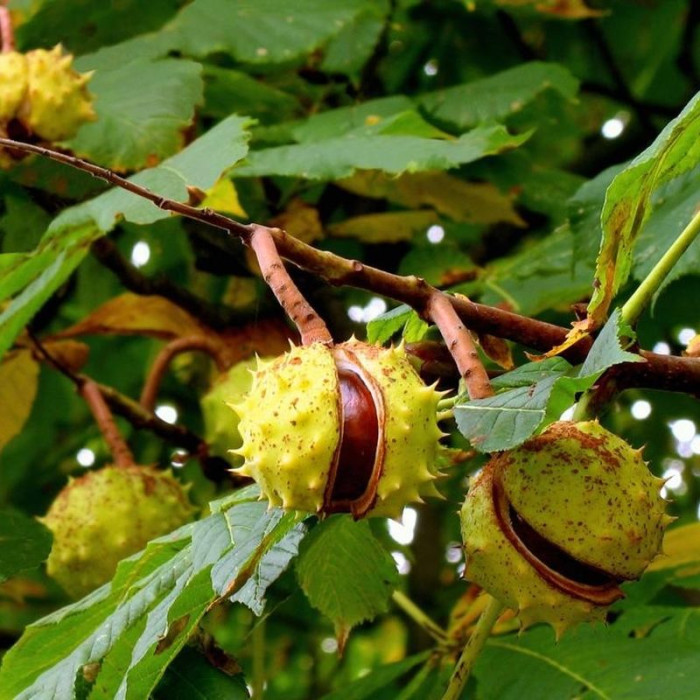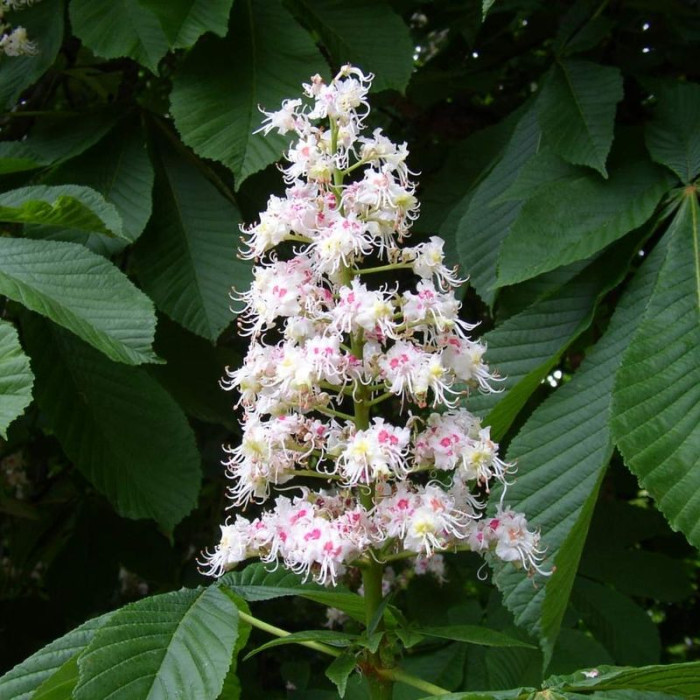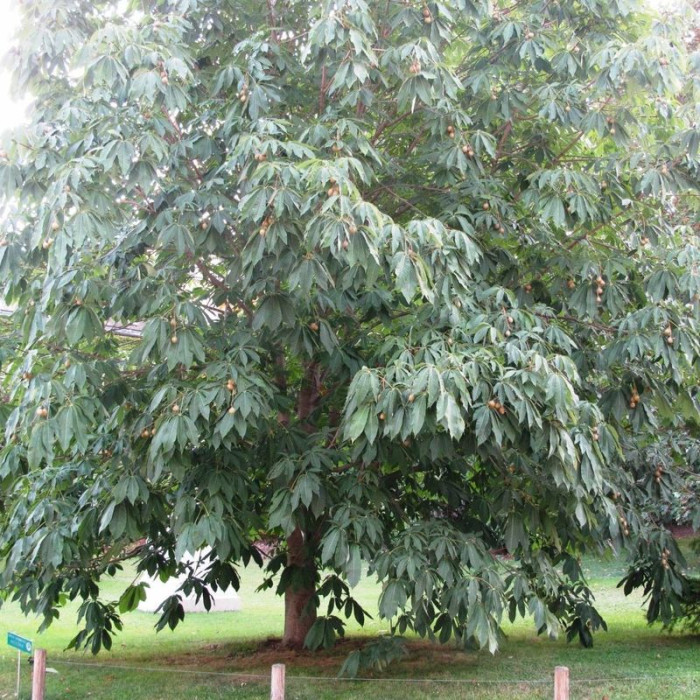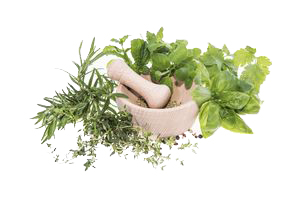Horse chestnut or buckeye / Aesculus - a genus of plants of the Sapindaceae family, many species of which are widely bred in parks. Deciduous tree, reaching 25 m in height, or shrub 1.5-5 m high. The leaves are large, complex, 5-7-fingered, opposite, with long petioles, without stipules. They form a dense crown.
The flowers are bell-shaped, up to 2 cm in diameter, bisexual, irregular, with an oblique plane of symmetry passing through the fourth sepal. Inflorescences are large, in the form of erect pyramidal brushes.
Flower cover double; the green calyx consists of 5 sepals fused at the base; a whitish corolla with a pink base consists of five free petals, of which one, located between the third and fourth sepals, is very small, and sometimes it does not exist at all; stamens 7, their filaments are long and bent; one pistil, consisting of 3 carpels; the ovary is upper three-nested, in each nest there are 2 ovules, one of which is directed upwards and the other downwards; column is long.
Blooms in May-June. The nectar of chestnut flowers contains 65-75% sucrose. The horse chestnut form with double flowers does not produce nectar.
The fruit is a tricuspid spiny capsule, opening along the valves, with one large seed; the embryo is bent, there is no protein.
It is propagated by seeds, which are obtained in abundance almost annually, and produces root suckers and stumps, but can also be propagated by cuttings and layering.
Application: the seeds are similar in composition and nutritional value to bread grains, but richer in water content (49%), which, however, greatly decreases upon drying (up to 19%). Due to the bitter-astringent taste, they are at first reluctantly eaten by cattle, then getting used to them. They are best given in the form of flour, which is sprinkled on food prepared by steaming or self-heating; it is also good to feed with root crops.
From the crushed seeds, a special snuff is prepared.
Flowers, fruits and bark of horse chestnut are valuable raw materials for pharmaceuticals. The bark of trunks and branches contains an abundance of tannins, the glycoside esculin and the saponin escin. Esculin reduces capillary permeability, increases the antithrombic activity of blood serum, increases the production of antithrombin, enhances blood filling of the veins; previously used sometimes instead of cinchona peel. Escin lowers blood viscosity. Therefore, chestnut preparations are used to treat vascular diseases.
In folk medicine, flowers, the bark of branches and the peel of seeds (but not the prickly box in which the seeds are stored) are used. Juice squeezed from fresh flowers is used orally for dilated veins in the legs and for hemorrhoids. A decoction of the bark of the branches is used for baths with hemorrhoids. An alcoholic tincture of dried horse chestnut flowers is used externally for rheumatic and arthritic pains.
Horse chestnut in warm climates is bred in parks for its magnificent foliage and excellent candelabra flowers.
The plant is valued as an early honey plant. Chestnut honey is thin, clear and usually colorless; easily and quickly crystallizes, sometimes bitter.

No questions about this product, be the first and ask your question.


